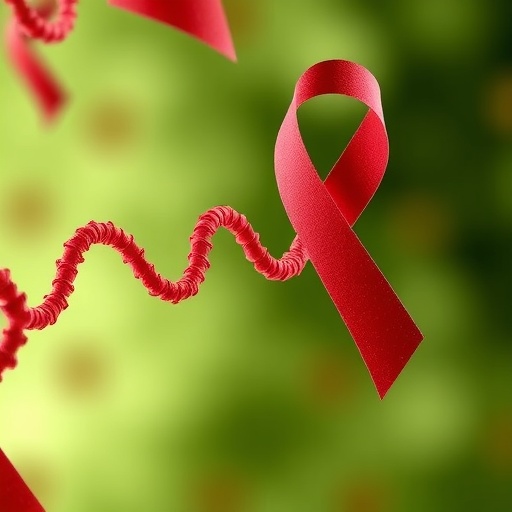In a groundbreaking advance in HIV research, scientists at the Salk Institute have unveiled new structural insights into HIV-1 integrase, a viral protein pivotal to HIV replication. Their findings, recently published in Nature Communications, have illuminated the remarkable flexibility of integrase and its dual role in facilitating viral replication. This work offers a fresh perspective that could catalyze the development of innovative antiviral agents aimed at inhibiting HIV’s propagation more effectively.
HIV-1 remains a global health crisis, with approximately 40 million people living with the virus worldwide. Despite progress in managing the disease through antiretroviral therapy, challenges such as drug resistance, side effects, and social stigma persist, underscoring the urgent need for new therapeutic strategies. Integrase, long recognized for its function in inserting viral DNA into the infected host’s genome, has now been found to also engage viral RNA at later stages—highlighting previously uncharacterized roles in the HIV lifecycle.
The Salk research team employed cryo-electron microscopy (cryo-EM) to capture integrase in two distinct structural conformations. Initially, integrase operates as part of a massive “intasome” complex, consisting of four identical subunits arranged into a 16-part assembly. This architecture tightly encircles viral DNA, orchestrating its integration into the host genome, a critical step that establishes permanent infection within the host cell.
Later in the replication process, integrase adopts a drastically different form. It transitions from the large intasome to a minimalist four-part complex, a configuration associated with binding to viral RNA inside the HIV capsid. This structural transition from DNA-focused activity to RNA interaction reveals the protein’s adaptability and suggests additional layers of complexity in HIV’s replication machinery.
This discovery marks the first time researchers have visualized integrase’s RNA-bound state, providing a high-resolution blueprint for this elusive form. Such structural insights are invaluable, as the design of targeted inhibitors typically relies on detailed knowledge of a protein’s 3D configuration to effectively disrupt its function without off-target effects.
The implication of integrase functioning beyond DNA integration is profound. While current integrase inhibitors such as Dolutegravir effectively block the protein’s DNA integration role, HIV’s rapid mutation rate often leads to resistance. By targeting integrase’s secondary role in RNA interaction, drug developers may circumvent existing resistance mechanisms, opening the door to new classes of antiretroviral therapies.
Senior author Dmitry Lyumkis, PhD, emphasizes the significance of these findings: “We are only beginning to understand the multifunctionality of integrase proteins. Mapping its interaction with RNA not only enriches our knowledge of viral biology but also informs the rational design of next-generation HIV therapeutics.”
At the molecular level, HIV’s retroviral replication strategy involves reverse-transcribing its RNA genome into DNA, which is then inserted into the host’s genome via integrase. This insertion transforms the host cell into a viral factory, producing progeny RNA that is packaged for new infections. Understanding the full scope of integrase’s roles in this cycle is essential for developing comprehensive antiviral strategies.
The integrase’s structural plasticity uncovered by the Salk team illustrates the dynamic nature of viral proteins. Their data show how subtle shifts in quaternary structure—disassembling from a 16-subunit “lock” to a compact 4-subunit complex—enable integrase to pivot between its DNA and RNA binding functions. Such dynamic assembly-disassembly processes could be exploited pharmacologically to trap the protein in inactive states.
This research represents a collaboration among numerous experts across molecular biology, structural biology, and virology, including significant contributions from partnering institutions such as the University of Colorado School of Medicine, Dana-Farber Cancer Institute, and the National Institute of Diabetes and Digestive and Kidney Diseases. Their collective expertise underscores the complexity and interdisciplinary nature of combatting HIV.
The study also showcases the power of cryo-electron microscopy, which has revolutionized structural biology by enabling the visualization of large and flexible protein complexes in near-native states. The high-resolution cryo-EM maps generated by the researchers provide unparalleled detail into integrase’s architecture, setting a new standard for future investigations of viral proteins.
Beyond its scientific merit, this discovery carries translational potential for public health. Novel integrase inhibitors targeting both DNA and RNA-related functions may reduce drug resistance, improve treatment durability, and mitigate adverse effects. Such advances are critical in the ongoing global effort to curb HIV transmission and improve the quality of life for millions affected by the virus.
As the scientific community digests these findings, follow-up studies are anticipated to confirm integrase’s RNA interaction mechanisms, assess their roles in viral encapsidation and infectivity, and explore the potential for targeting these interactions therapeutically. This evolving picture of integrase’s biology promises to reshape HIV drug development paradigms in the coming years.
The Salk Institute’s pioneering research not only deepens our fundamental understanding of HIV biology but also exemplifies the fusion of structural insights and therapeutic innovation. With new blueprints in hand, drug designers are now better equipped than ever to develop integrase-targeting agents that could transform the clinical management of HIV-1 infection and ultimately help turn the tide against this enduring pandemic.
Subject of Research: Structural and functional analysis of HIV-1 integrase in its dual roles interacting with viral DNA and RNA.
Article Title: Structural Elucidation of HIV-1 Integrase Reveals Dual Functionality in Viral DNA Integration and RNA Interaction
News Publication Date: October 24, 2025
Web References:
https://www.nature.com/articles/s41467-025-64479-8
References:
Lyumkis, D., Jing, T., Shan, Z., et al. (2025). Structural insights into HIV-1 integrase functions during DNA integration and RNA interaction. Nature Communications. DOI: 10.1038/s41467-025-64479-8
Image Credits:
Salk Institute




